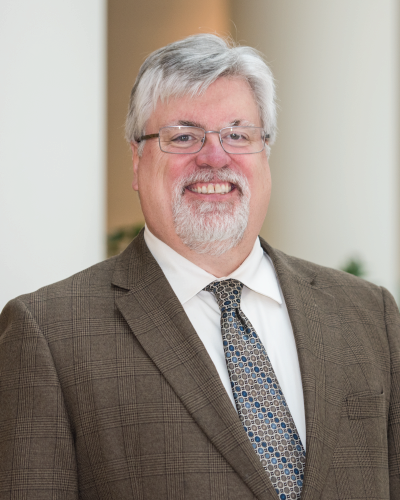Profile
Prior to returning to his faculty role in 2017, Robert C. Dysko, DVM, DACLAM, served as the University of Michigan’s Attending Veterinarian (AV) and as the Director of the Unit for Laboratory Animal Medicine (ULAM) for five years.
Before his appointment as the University’s AV and Director of ULAM in 2012, Dr. Dysko served as a member of the ULAM faculty, where his research focused on evaluating the quality of drinking water provided to laboratory animals. After completing his residency at U-M in 1986, he briefly taught at Wake Forest University before returning to the U-M as a full-time faculty member in 1990. One of his primary roles was serving as ULAM’s representative during a period of major growth for the university, which included construction of new state-of-the-art animal housing facilities at various locations across campus.
In addition to his many contributions to the University of Michigan, Dr. Dysko has also served on the board of directors for three national veterinary organizations: the American College of Laboratory Animal Medicine (ACLAM), the American Association of Laboratory Animal Science (AALAS), and the Association of American Veterinary Medical Colleges (AAVMC).
RESEARCH INTERESTS
Dr. Dysko’s research interests over the past 12 years have focused on evaluating the quality of drinking water provided to laboratory animals, especially in automated watering systems. This interest began with a small project to see how long a water bottle might be able to stay on a mouse cage (without being replaced) if there was only one mouse in the cage. This project led to the evaluation of water in automated watering systems, and a subsequent study on biofilm development in these water lines.
The biofilm studies yielded interesting data and opportunities, and Dr. Dysko’s team learned that bacterial biofilm develops within the piping on mouse racks, especially after they have been in use for greater than three months (this is with City of Ann Arbor drinking water passed through a 5.0 micron filter). Standard rack sanitation methods seem to be reasonably effective at reducing this biofilm, and the team was able to partner with Edstrom Industries to study the effects of some different water treatment procedures on the development of biofilm; but neither ultrafiltration nor use of an automated rack flush system made a significant difference in the quantity of biofilm development over a six-month period. The bacterial flora in the biofilm has not contained any classic rodent pathogens, and the bacteria that colonized the intestinal tracts of germ-free mice did not pose any clinical health problems, although an increase in the size of gut-associated lymphoid tissue was observed.
This work has been presented at seven national AALAS meetings and two international conferences, resulted in three publications, and two manuscripts in progress.
Professional Background
- Bachelor of Science (Zoology) – Iowa State University, 1979
- Doctor of Veterinary Medicine – Iowa State University, 1983
- Board Certified – American College of Laboratory Animal Medicine, 1987
SELECTED PUBLICATIONS
- Shuster KA, Brock KL, Dysko RC, DiRita VJ, Bergin IL. Polytetrafluoroethylene toxicosis in a group of recently hatched chickens (Gallus domesticus). Comparative Medicine. 62(1):49-52, 2012.
- Lee J, Lee C, Hugunin KMS, Maute CJ, Dysko RC. Bacteria from drinking water supply and their fate in gastrointestinal tracts of germ-free mice: a phylogenetic comparison study. Water Research. 44(17):5050-5058, 2010.
- Duran-Struuck R, Dysko RC. Principles of bone marrow transplantation (BMT): providing optimal veterinary and husbandry care to irradiated mice in BMT studies. Journal of the American Association of Laboratory Animal Science. 48(1):1-12, 2009.
- Meier TR, Maute CJ, Cadillac JM, Lee J, Righter DJ, Hugunin KMS, Deininger RA, Dysko RC. Quantification, distribution, and possible source of bacterial biofilm in mouse automated watering systems. Journal of the American Association of Laboratory Animal Science. 47(2):63-70, 2008.
- Haist CA, Cadillac JM, and Dysko RC. Assessment of bacterial contamination of drinking water provided to mice. Contemporary Topics in Laboratory Animal Science. 43(6):8-13, 2004.
